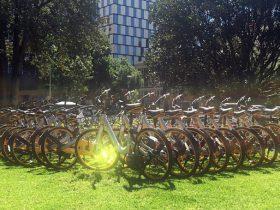By Matt Hamblen
Tesla’s AI and Autopilot lead engineer Andrej Karpathy announced Wednesday on Twitter he is leaving the company after a months-long sabbatical, adding he has“no concrete plans for what’s next.”
Karpathy noted his last five years have led Tesla’s Autopilot tech from what is known in tech circles as “lane keeping” to its ability to drive on complex city streets, and credited his “exceptionally strong” Autopilot team for its ability to continue that momentum.
Tesla CEO Elon Musk replied to Karpathy’s tweets with a “Thanks for all you have done for Tesla.”
The shift to Industrial IoT is spurring new applications, from driverless transport to autonomous robots. In this whitepaper, discover how NXP’s security-by-design approach provides a path for optimal protection in industrial applications.Read Whitepaper
Aside from such Twitter niceties, there are questions how investors and the public at large are expected to react to the departure. More importantly, what does it mean for self-driving cars and their future? Is the departure another delay in development of a very complex technology or just another reminder that reliable self-driving tech was always going to be a long slog despite some marketing promises otherwise?
Musk on April 22, 2019, said that Tesla would have 1 million robotaxis on the road in 2020, which has not come close to happening. The company has not yet demonstrated coast-to-coast autonomous vehicle capability.
In June, one comment by Marc Amons on Twitter summarized the feelings of others when he wondered whether departures by experts in self-driving show they “don’t want to stay in place long enough to be held accountable for actual results.”
Some tweets have been more sarcastic, with one noting that Karpathy is leaving “right before” full self-driving from Tesla is available, even though full self-driving is not envisioned by most experts for years to come despite Tesla’s declarations.
A few analysts are far more skeptical. “It would not be a surprise that Tesla is throttling back its ambition of a high liability, potentially low return application for the foreseeable future,” said Leonard Lee, managing director of neXt Curve.
Tesla’s safety record has been called into question as well. Its vehicles made up 70% of 392 reported crashes involving advanced driver-assistance systems since June 2021, according to federal data released June 15. The data covered 11 automakers and one supplier. Tesla has more than 830,000 vehicles on U.S. roads with partly automated systems going back to 2014, an indication of its size and potential exposure to accidents.
Karpathy’s departure may or may not have stemmed from internal concerns over Tesla’s safety record. A question also remains why Tesla recently closed a Tesla office in San Mateo, California, where 229 people were dismissed after working on data annotation designed to help improve driver assistance technology. Karpathy worked at Tesla’s former headquarters in Palo Alto, California, where he reported to Musk.
The layoffs appear to have been in Karpathy’s department, noted Jack Gold, an analyst at J. Gold Associates, among others. “No doubt the layoffs reduced the onboard knowledge that the company needed to perfect any autonomous driving systems,” Gold said. “Reducing staff also means reducing your knowledge base and learned expertise.”
Despite such setbacks to Tesla and potentially to the development of self-driving technology, Gold and others believe Karpathy will have no problem moving to a new position. And Tesla will likely find top expertise, internal or external, to move forward.
“Full autonomy is really hard to do, so I’m not surprised it hasn’t happened yet and probably won’t for a while except for every specific reduced functionality situations, not for general purpose consumer driving,” Gold added.
Derek Kerton, chairman of the Autotech Council based in Silicon Valley, said Karpathy’s leaving is not a sign of Tesla’s potential ruin or even of a decline of interest in self-driving tech around the globe where many carmakers are embracing research into the tech. Without Karpathy, Tesla should still have a repository of “institutional talent” to carry it forward, he said.
The departure of the 229 workers in San Mateo could have an impact on Tesla’s institutional know-how, however, and may have precipitated Karpathy’s decision to finally leave after a lengthy sabbatical, he said.
Based on odds alone, Kerton predicted the public won’t see full self-driving from Tesla in 2022. “If you bet against FSD over the long-term, you’ll lose,” he quickly added. “If you bet against it every year, you’ll have a series of wins followed by a single loss.”
It will take another three to five years, perhaps, before the public sees safe, legal FSD in a commercially available personal car for use on trips from home to destination, he predicted. “The progress we’ve seen so far, Tesla included, seems to suggest we’ll see incremental improvements, not a leap forward.”
Tesla’s role in self-driving advances has already been a big one, he believes.
“Tesla has made ADAS more sophisticated so other companies are finally having to innovate and put their innovations on the road,” Kerton said in an interview. “I don’t think that momentum stops if Tesla disappeared tomorrow. The road to self-driving is part of everybody’s business plan and that work progresses on the same trajectory.”
Kerton agreed that Tesla has “overpromised more than other companies” on the arrival of full self driving, but deserves credit for announcing its high goals. “I certainly think that dreaming big and arriving late is a huge success and it beats never dreaming and never arriving. Whether Musk succeeds or not, they’ve made the whole industry respond. All of his competitors are being more cautious and risk averse.”
Link: https://www.fierceelectronics.com/sensors/teslas-ai-chief-karpathy-quits-raising-doubts-full-self-driving-timeline
Source: https://www.fierceelectronics.com
















Leave a Reply